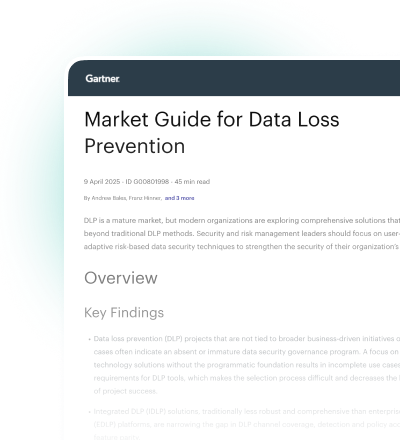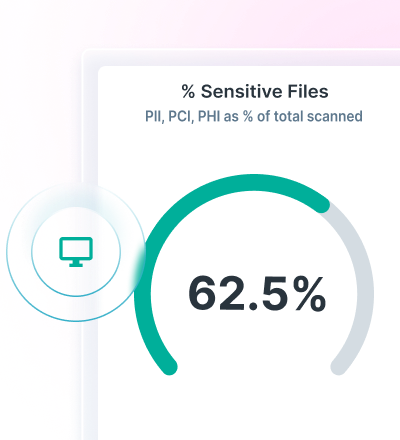
NGFW Firewall
Ağ Genelindeki Riskleri Azaltın
Forcepoint Next-Generation Firewall (NGFW) ile hızlı, esnek ağ ve endüstri lideri güvenliği birleştirin.
Ağı gelişmiş tehditlerden koruyun.
Forcepoint Next-Generation Firewall, geniş ölçekte endüstri lideri ağ güvenliği sunar. Secure Management Console (SMC) aracılığıyla dünyanın her yerinden dağıtım yapın ve politika yönetimini, olay müdahalesini ve raporlamayı tek bir konsol altında birleştirin.
Forcepoint NGFW Modellerini Keşfedin

3500 Serisi
Büyük işletmeler, yerleşke ağları ve veri merkezleri için idealdir.
66 arayüze kadar
600 Gbps'ye ulaşan güvenlik duvarı performansı
140 Gbps'ye varan IPS & NGFW performansı

3400 Serisi
Yerleşke ağları ve veri merkezleri için
idealdir.67
arayüze kadar 200-300 Gbps
IPS NGFW verimi 15-35 Gbps'ye kadar

2200 Serisi
Orta ölçekli ve büyük ofisler için
idealdir.25
arayüze kadar güvenlik duvarı verimliliği 120 Gbps
IPS NGFW verimliliği 13,5 Gbps'ye kadar

1200 Serisi
Orta ölçekli ve büyük ofisler için idealdir.
17 arayüze kadar
65 Gbps'ye ulaşan güvenlik duvarı performansı
5 Gbps'ye ulaşan IPS NGFW performansı

350 Serisi
Uzak siteler ve şube ofisleri (masaüstü tasarımı) için idealdir.
13 arayüze kadar
40 Gbps'ye ulaşan güvenlik duvarı performansı
2 Gbps (N352) veya 4,1 Gbps (N355) IPS NGFW performansı

120 Serisi
Geleneksel mağazalar ve şube ofisleri için idealdir.
8 arayüze kadar
4 Gbps güvenlik duvarı performansı
450 Mbps IPS NGFW performansı

60 Serisi
Uzak ofisler, şubeler ve geleneksel mağazalar için idealdir.
4 arayüze kadar
2 Gbps güvenlik duvarı performansı
350 Mbps IPS NGFW performansı
Forcepoint Yeni Nesil Güvenlik Duvarı (NGFW) Veri Sayfası
Platformlar, özellikler, tehdit koruması ve entegre SD-WAN işlevselliği dahil olmak üzere Forcepoint NGFW özellikleri hakkında daha fazla bilgi edinin.
Bulut Görüntüleri:
- Birleşik Forcepoint NGFW yazılımı
- Amazon Web Services (AWS)
- Microsoft Azure Solutions
- Hem bulut içi/dışı kuzey-güney iletişimini hem de SDN doğu-batı iletişimini güvence altına alır
Sanal Cihazlar:
- Birleşik Forcepoint NGFW yazılımı
- KVM ve VMware ESXi ve NSX için kullanılabilir
- 64 CPU'ya kadar ölçeklendirme
- Ağ mikrosegmentasyonunu otomatikleştirir
- Fiziksel güvenlik duvarları ile kümelenebilir
Neden Forcepoint NGFW?
Yönetimi, SMC ile merkezileştirin
Ağ politikalarını yönetin, güvenlik olaylarını gerçek zamanlı olarak belirleyin ve önleyin ve SMC aracılığıyla cihazların ve uygulamaların performansını gözden geçirin.
Ağı Bilinmeyenlerden Koruyun
Zero Trust ağ erişim kontrolleri, Gelişmiş Kötü Amaçlı Yazılım Tespiti ve Koruması (AMDP), izinsiz giriş önleme ve diğer kontroller aracılığıyla sektör lideri güvenliği, güvenilir ağ yönetimi ile bir araya getirin.
Cihazlara Her Yerden Dağıtım Yapın
Çok sayıda fiziksel ve sanal cihazla dünyanın her yerinde ağı otomatikleştirin, düzenleyin ve ölçeklendirin.
Modüler Ağ Arayüzleri ile Özelleştirin ve Ölçeklendirin
Üst düzey, rafa monte Forcepoint NGFW cihazları, yeni ağ altyapısı için esneklik ve uyarlanabilirlik sağlayan bir dizi genişletilebilir ağ arayüzünü kabul eder.
Ağ Taleplerini Dengeleyin ve Kesintileri Önleyin
Hizmet kesintileri olmadan yazılım ve cihazları güncelleme yeteneği de dahil olmak üzere, uygulamaya duyarlı yönlendirme ile yük dengelemesi kümeleme ve çoklu ISP desteği yük dengelemesiyle daha güçlü ağ esnekliği ve ölçeklenebilirliği sağlayın.
Müşteriler Neden Forcepoint NGFW'yi Seçiyor
Müşteriler Neden Forcepoint NGFW'yi Seçiyor
"Our costs - both for the project and maintenance - are going down because we don't need resources locally, we have centralized everything. If we want new service on a train, we define the policy then give the hardware to the operator, who installs it."
VR Group
Ağınızı Güvence Altına Almak için Bilgi Edinin
Frequently Asked Questions
What is a firewall?
A firewall is a network security device that monitors incoming and outgoing network traffic and permits or blocks data packets based on a set of security rules. The purpose of a firewall is to establish a barrier between your internal network and incoming traffic from external sources (such as the internet) in order to block malicious traffic like viruses and hackers.
How does a firewall work?
Firewalls guard traffic at a computer’s entry point, called ports, which is where information is exchanged with external devices. Firewalls carefully analyze incoming traffic based on pre-established rules and filter traffic coming from unsecured or suspicious sources.
Why are firewalls important for organizations?
Firewalls help protect your network from threats. Forcepoint NGFW delivers industry-leading network security at scale. Deploy from anywhere in the world through the Secure Management Console (SMC) and unify policy management, incident response and reporting under one console.
What are features of a NGFW?
Features of a NGFW include:
Deep packet inspection: NGFWs inspect data at each of the four TCP/IP communication layers – application, transport, IP/network and hardware/datalink. This enables next-gen firewalls to operate with application awareness, an understanding about which applications are receiving and generating traffic and the types of user and application behavior that may be expected in those traffic patterns.
Automation and orchestration: NGFWs enable automatic deployment and instant updates that reduce the administrative burden on IT teams.
Intrusion detection/prevention: Next-gen firewalls detect and prevent cyberattacks by inspecting traffic at higher TCP/IP layers and monitoring for potential attacks based on anomalous behavior or specific attack signatures.
Application control: NGFWs provide real-time visibility into users and data interacting with applications, enabling high-risk applications to be identified and blocked when necessary.
Distributed Denial-of-Service (DDoS) protection: NGFWs are stateful technologies that check the characteristics of each connection to detect the many different types of illegitimate requests that may comprise a DDoS attack.
Unified threat management (UTM): NGFW solutions offer comprehensive security services that include antivirus, content filtering, malware infection and mitigation.
What are the types of firewalls?
Firewalls can either be software or hardware, though it’s best to have both. A software firewall is a program installed on each computer and regulates traffic through port numbers and applications, while a physical firewall is a piece of equipment installed between your network and gateway. Below are some specific types of firewalls:
Packet-Filtering Firewalls: Packet-filtering firewalls, the most common type of firewall, examine packets and prohibit them from passing through if they don’t match an established security rule set. This type of firewall checks the packet’s source and destination IP addresses. If packets match those of an “allowed” rule on the firewall, then it is trusted to enter the network.
Next-Generation Firewalls: Next-Generation Firewalls combine traditional firewall technology with additional functionality, such as encrypted traffic inspection, intrusion prevention systems, anti-virus and more. Most notably, it includes deep packet inspection (DPI). While basic firewalls only look at packet headers, deep packet inspection examines the data within the packet itself, enabling users to more effectively identify, categorize or stop packets with malicious data.
Proxy Firewalls: Proxy firewalls filter network traffic at the application level. Unlike basic firewalls, the proxy acts an intermediary between two end systems. The client must send a request to the firewall, where it is then evaluated against a set of security rules and then permitted or blocked. Most notably, proxy firewalls monitor traffic for layer 7 protocols such as HTTP and FTP and use both stateful and deep packet inspection to detect malicious traffic.
Network Address Translation (NAT) Firewalls: NAT firewalls allow multiple devices with independent network addresses to connect to the internet using a single IP address, keeping individual IP addresses hidden. As a result, attackers scanning a network for IP addresses can't capture specific details, providing greater security against attacks. NAT firewalls are similar to proxy firewalls in that they act as an intermediary between a group of computers and outside traffic.
Stateful Multilayer Inspection (SMLI) Firewalls: SMLI firewalls filter packets at the network, transport and application layers, comparing them against known trusted packets. Like NGFW firewalls, SMLI also examine the entire packet and only allow them to pass if they pass each layer individually. These firewalls examine packets to determine the state of the communication (thus the name) to ensure all initiated communication is only taking place with trusted sources.
What is an SD-WAN firewall?
An SD-WAN firewall enhances cybersecurity by monitoring and managing inbound and outbound network traffic within a Software-defined Wide Area Network (SD-WAN).
What is network security?
Network security is a combination of rules and configurations that help protect computer networks and data.
How does network security work?
There are many layers to consider when addressing network security across an organization. Attacks can happen at any layer in the network security layers model, so your network security hardware, software and policies must be designed to address each area. Network security typically consists of three different controls: physical, technical and administrative.
What are types of network security?
Network Access Control
Antivirus and Antimalware Software
Firewall Protection
Virtual Private Networks
What is a network attack?
A network attack is an unauthorized action on digital assets within an organizational network. Malicious parties usually execute network attacks to alter, destroy or steal private data. Perpetrators in network attacks tend to target network perimeters to gain access to internal systems.
What are the types of network attacks?
DDoS: DDoS attacks involve deploying sprawling networks of botnets, which are malware-compromised devices linked to the internet. These bombard and overwhelm enterprise servers with high volumes of fraudulent traffic. Malicious attackers may target time-sensitive data, such as that belonging to healthcare institutions, interrupting access to vital patient database records.
Man-in-the-Middle Attacks (MITM): MITM network attacks occur when malicious parties intercept traffic conveyed between networks and external data sources or within a network. In most cases, hackers achieve MITM attacks via weak security protocols. These enable hackers to convey themselves as a relay or proxy account and manipulate data in real-time transactions.
Unauthorized Access: Unauthorized access refers to network attacks where malicious parties gain access to enterprise assets without seeking permission.
SQL Injection: Unmoderated user data inputs could place organizational networks at risk of SQL injection attacks. Under the network attack method, external parties manipulate forms by submitting malicious codes in place of expected data values. They compromise the network and access sensitive data such as user passwords. There are various SQL injection types, such as examining databases to retrieve details on their version and structure and subverting logic on the application layer, disrupting its logic sequences and function.
What are examples of network attacks?
Social Engineering: Social engineering involves elaborate techniques in deception and trickery techniques, such as phishing, that leverage users’ trust and emotions to gain access to their private data.
Advanced Persistent Threats (APT): Some network attacks may involve APTs from a team of expert hackers. APT parties will prepare and deploy a complex cyber-attacks program. This exploits multiple network vulnerabilities while remaining undetected by network security measures such as firewalls and antivirus software.
Ransomware: In ransomware attacks, malicious parties encrypt data access channels while withholding decryption keys, a model that enables hackers to extort affected organizations.
What is packet loss?
When accessing the internet or any network, small units of data called packets are sent and received. Packet loss is when one or more of these packets fails to reach its intended destination. For users, packet loss manifests itself in the form of network disruption, slow service and even total loss of network connectivity.
What are causes of packet loss?
Network Congestion
Software Bugs
Problems with Network Hardware
Security Threats
What is Defense in Depth (DiD)?
DiD is a cybersecurity approach with a series of defensive mechanisms that are layered to protect valuable data and information.
What is the Open Systems Interconnection (OSI) Model?
The OSI Model is a conceptual framework used to describe the functions of a networking system. The OSI model characterizes computing functions into a universal set of rules and requirements in order to support interoperability between different products and software. In the OSI reference model, the communications between a computing system are split into seven different abstraction layers: Physical, Data Link, Network, Transport, Session, Presentation and Application.
What is an Intrusion Prevention System (IPS)?
An IPS is a form of network security that works to detect and prevent identified threats. An IPS is typically configured to use a number of different approaches to protect the network from unauthorized access. These include:
Signature-Based: The signature-based approach uses predefined signatures of well-known network threats. When an attack is initiated that matches one of these signatures or patterns, the system takes necessary action.
Anomaly-Based: The anomaly-based approach monitors for any abnormal or unexpected behavior on the network. If an anomaly is detected, the system blocks access to the target host immediately.
Policy-Based: This approach requires administrators to configure security policies according to organizational security policies and the network infrastructure. When an activity occurs that violates a security policy, an alert is triggered and sent to the system administrators..
How do Intrusion Prevention Systems Work?
Intrusion prevention systems work by scanning all network traffic. There are a number of different threats that an IPS is designed to prevent, including:
- Denial of Service (DoS) attack
- Distributed Denial of Service (DDoS) attack
- Various types of exploits
- Worms
- Viruses
What is branch networking?
Branch networking refers to the elements used to distribute information to, from and among remote sites, stores, branch offices and data centers.










